Playtime Indoors: 6 Fitness Packed Indoor Games for Children
A child's desire to play is a natural and vital part of their development, driven by their boundless curiosity and imagination.
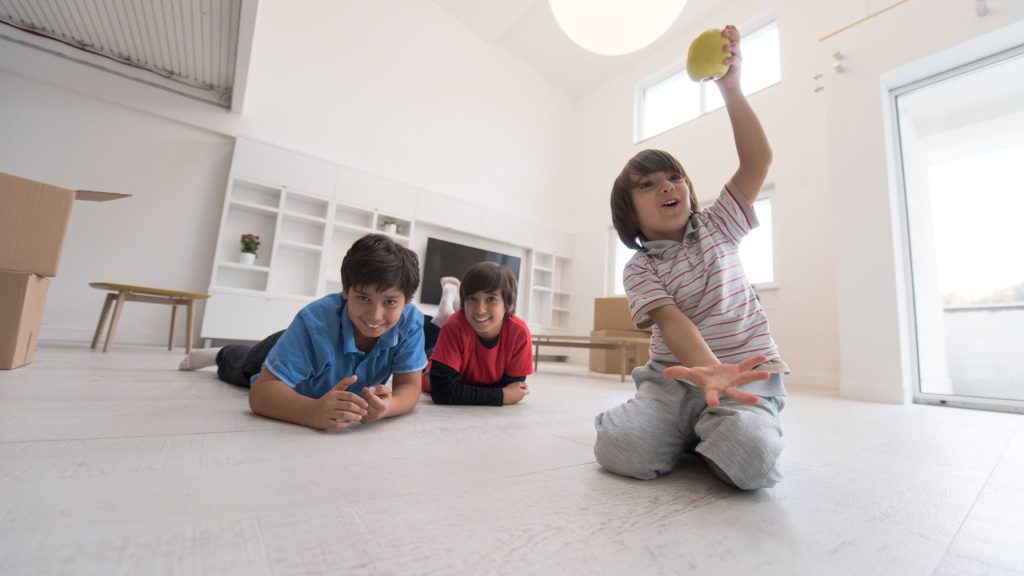
Yet, for a child, the desire to play and explore doesn’t fade with the weather. With the right indoor activities, as parents we can transform these moments into opportunities for growth, helping our children stay active, entertained, and healthy despite the gloomy weather outside. Indoor games offer a world of fun and excitement, no matter the season.
When children are unable to go outdoors, their natural inclination often turns to screens, which, though tempting, can lead to issues like reduced physical activity and strained eyes. Instead of letting screen time take over, we can channel their energy into indoor games that are just as engaging and enjoyable. These activities not only keep them entertained but also promote physical fitness and mental agility, making them a perfect alternative for days when the weather isn’t cooperating. By creating an environment where indoor play is just as exciting as outdoor physical activities, we can ensure our children remain active, healthy, and happy, regardless of what’s happening outside.
1. Indoor Hopscotch:
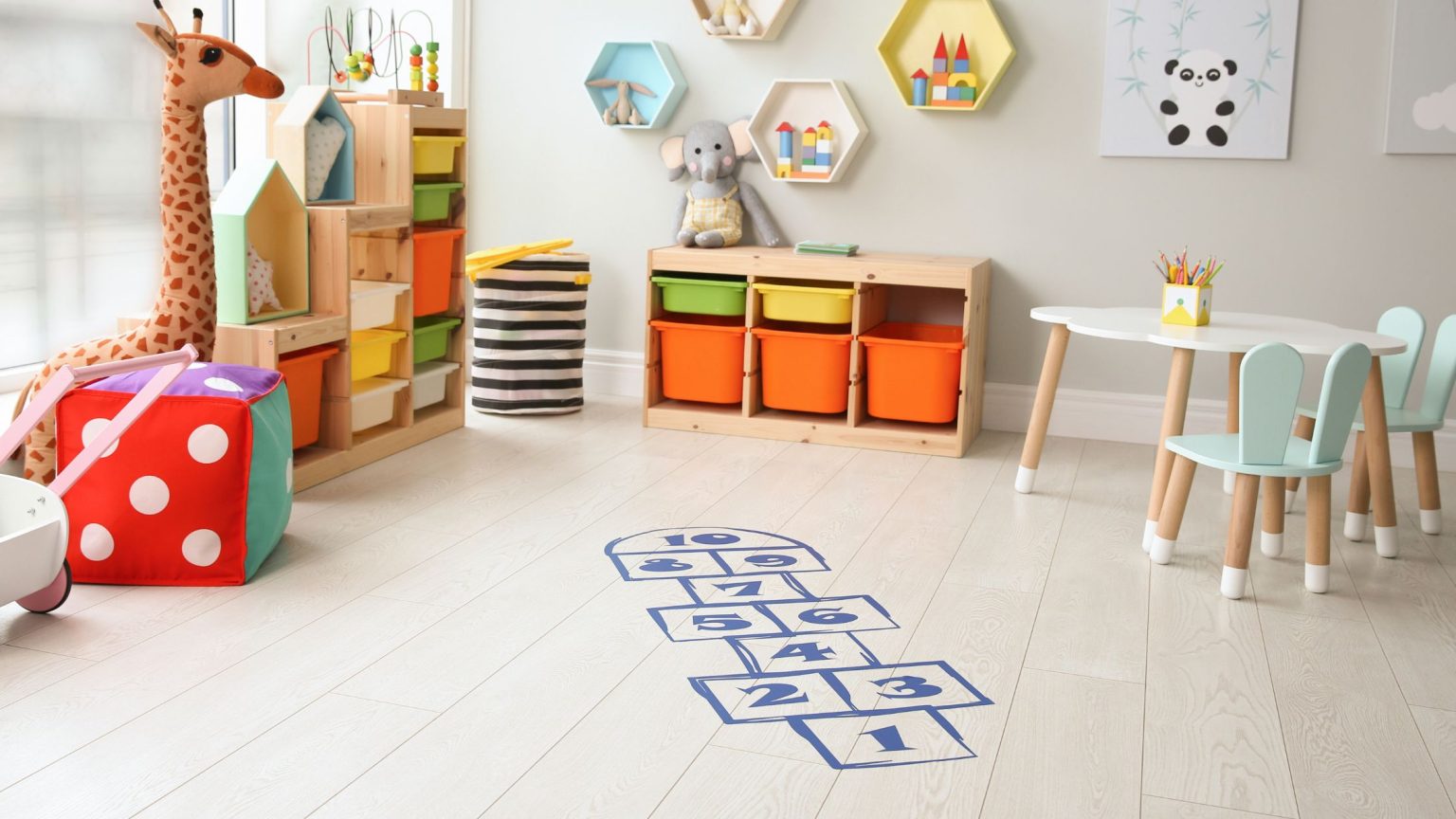
Indoor hopscotch is a creative and engaging way to keep your child active while staying indoors. Create a hopscotch grid on the floor, using colourful masking tapes mimicking the traditional outdoor version. Number the squares, and your child can hop from one to the next, practicing their balance and coordination.
As they jump and land on each square, they enhance their motor skills and focus, all while having fun. The game also helps with number recognition and counting, making it both physically and mentally stimulating. This simple setup provides a safe environment where your child can burn off energy without needing much space. Modify it to suit your child’s age and skill level, create a “power-up” system where each square has a different task or challenge to make it fun and even more interesting.
2. Indoor obstacle course:
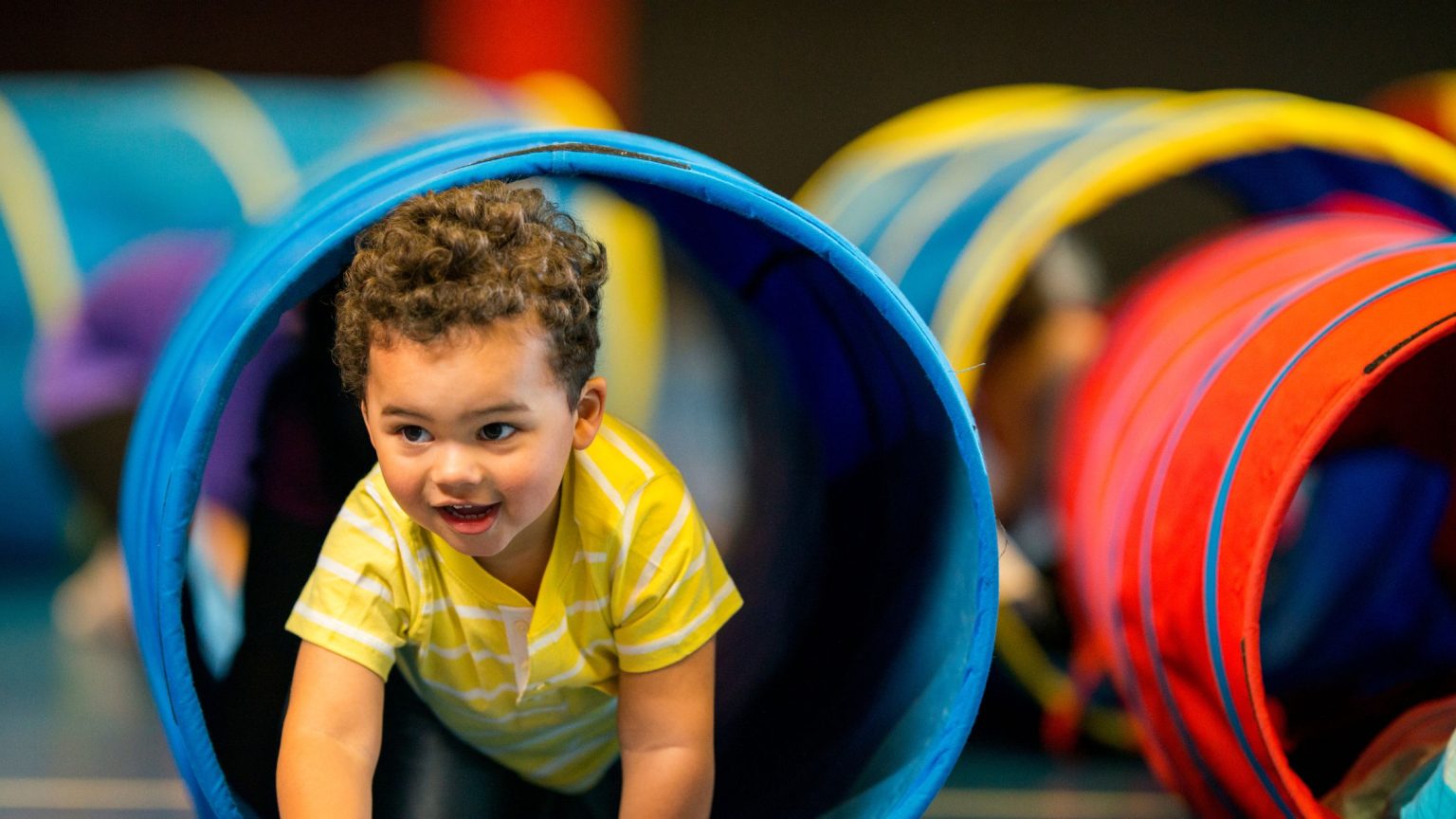
Creating an indoor obstacle course is a fantastic way to keep your child active and entertained while indoors. Transform your living space into a playful adventure zone using household items like pillows, chairs, and blankets to set up various challenges. For instance, you can create a crawling tunnel with chairs draped in blankets, set up a series of pillows to jump over, or arrange cushions for balance beams.
Indoor obstacle course enhances a child’s coordination, balance, and motor skills as they manoeuvre through the different obstacles. This setup not only transforms but also encourages creativity and problem-solving skills of your child. Additionally, it offers a fun way to improve their ability to follow instructions and adapt to changing challenges. This type of play fosters resilience and confidence while keeping your child engaged and active in a safe indoor environment.
3. Hula Hooping:
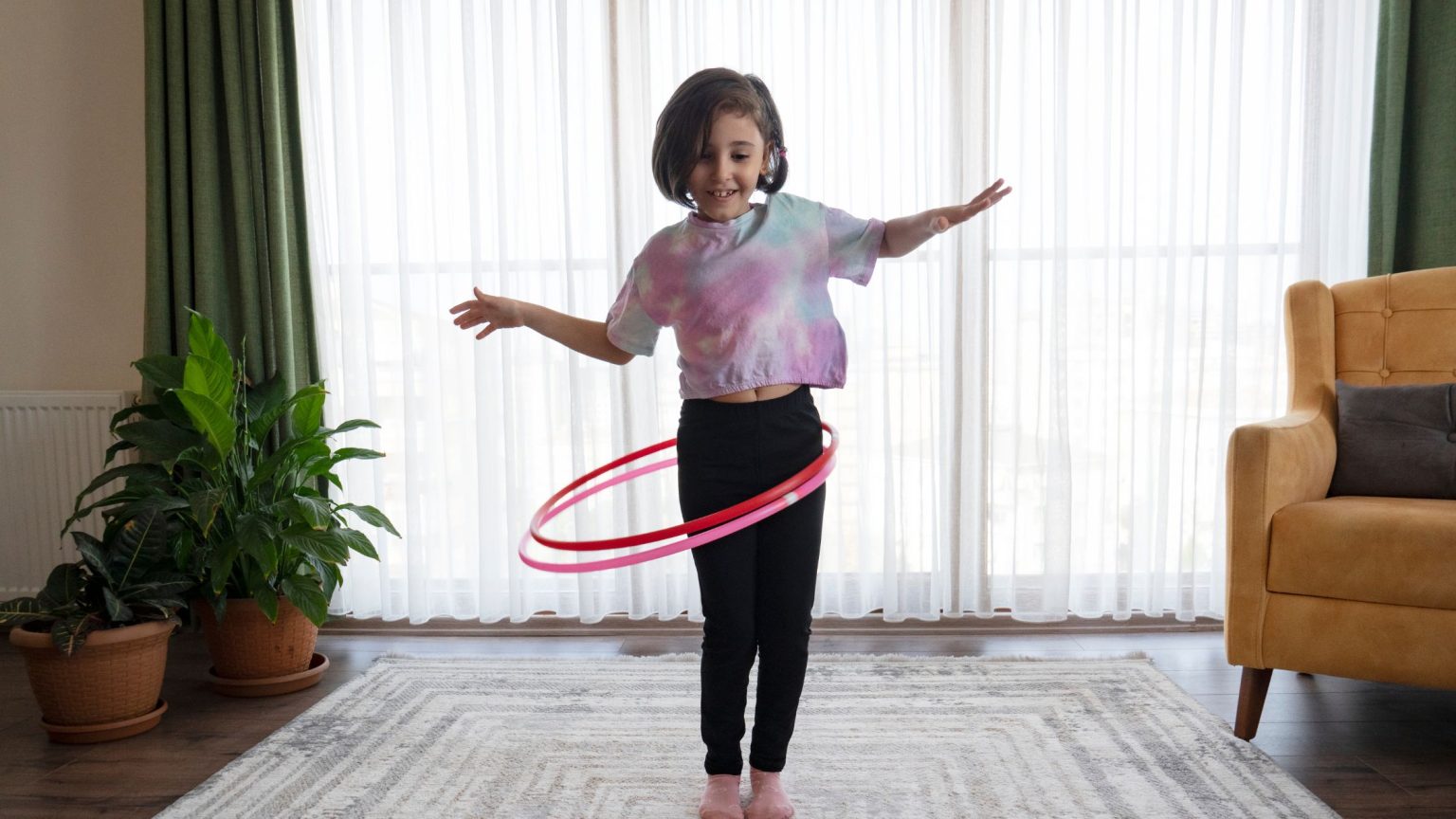
Bring fun and fitness home with hula hooping. Play some upbeat music and get your little one to spin, sway, and shimmy while they hoop. To make it more enjoyable, try incorporating dance moves into their hula hooping session. This adds a rhythmical element to the exercise and makes it feel like a dance party, encouraging them to keep moving and groove along.
Another way to spice up hula hooping is by introducing challenges or games. Set up a mini obstacle course where your child has to hula hoop while jumping over small hurdles. You can also have friendly competitions, such as seeing who can hoop the longest or perform the most creative tricks. Adding these playful elements keeps the activity fresh and exciting, making hula hooping a fun way to improve coordination and stay active indoors.
4. Simon says:
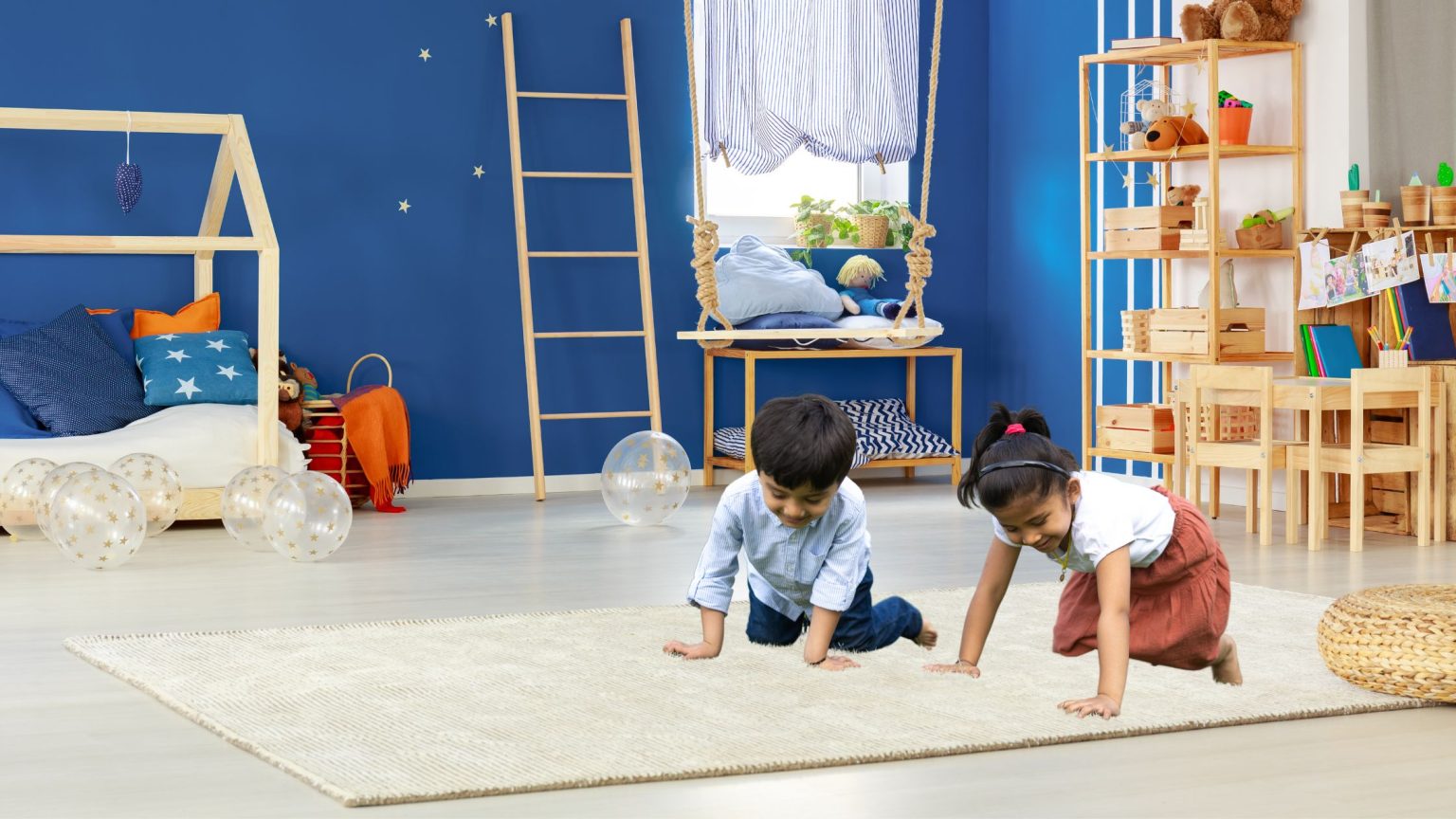
An excellent indoor game that blends fun with fitness is “Simon Says.” The game is simple yet engaging: give commands to your little one and let them follow, but only if the command starts with “Simon says.” This playful twist not only keep your children on their toes but also encourages them to pay close attention, enhancing their listening skills. The commands can range from jumping and hopping to stretching and dancing, ensuring that children are constantly moving and burning off energy.
Beyond being just a game, “Simon says” also serves as a creative way to incorporate physical exercise into playtime indoors. It helps improve coordination, balance, and agility as children respond to various actions. Additionally, it can be easily adapted to suit different age groups and fitness levels, making it a great choice of indoor game. Whether played with friends or family, “Simon says” offers a lively and enjoyable way to keep kids fit and focused, all while having a lot of fun.
5. Scavenger Hunt/ Treasure Hunt:

One of the most thrilling indoor activities that you can enjoy with your little one is a scavenger hunt. It adds an element of adventure to any sort of play be it indoors or outdoors. Create a list of items for your little one to find, hiding them around the house or yard. You can make the hunt more exciting by using clues or riddles to guide them to each item. For example, a clue might read, “Look where you keep your books ,” leading them to a hidden treasure by the book rack . This not only turns the search into a fun indoor game but also sparks their problem-solving skills and critical thinking.
Keep the scavenger hunt fresh and engaging by considering themed hunts where each item relates to a specific topic, such as animals, colours, or even a favourite story. You can also introduce challenges or tasks that need to be completed before moving on to the next clue, like doing a funny dance or answering a trivia question. By adding these creative twists, the scavenger hunt becomes an immersive adventure that combines exploration with learning and play, making it a memorable experience for your child.
In conclusion, keeping children engaged with indoor games is a great way to ensure they stay active and entertained. By offering a variety of activities like obstacle courses, dance parties, and interactive challenges, you keep them moving and having fun, even when they’re indoors. Remember to mix things up and introduce new games to maintain their interest and excitement. Keep them engaged, keep playing, and you’ll provide a stimulating environment that supports their physical and mental development, making indoor time both enjoyable and beneficial.





